The good side of microbes goes under the microscope this week as we explore how the 100 trillion bacteria that thrive on us and in us, and even outnumber our own cells ten times over, work with the body to maintain good health. We also hear from the Nobel prizewinner who's turning the stomach bug Helicobacter pylori into an edible vaccine against the flu and how to build better bioreactors to culture them in! Plus, how trees cause clouds to form, more evidence that the building blocks of life came from outer space, how nicotine keeps smokers thin and built-in cardiac stem cells that can mend a broken heart...
In this episode
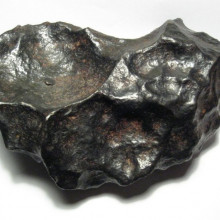
02:06 - More evidence that life's building blocks came from space
More evidence that life's building blocks came from space
Regular listeners may remember that back in March we covered a story in which US researchers discovered that the simple molecules needed to make amino acids - the building blocks of proteins -
may have hitched a ride to earth on meteorites. Now researchers working on fragments of a large meteorite that exploded over Lake Tagish in Canada back in the year 2000 have found more 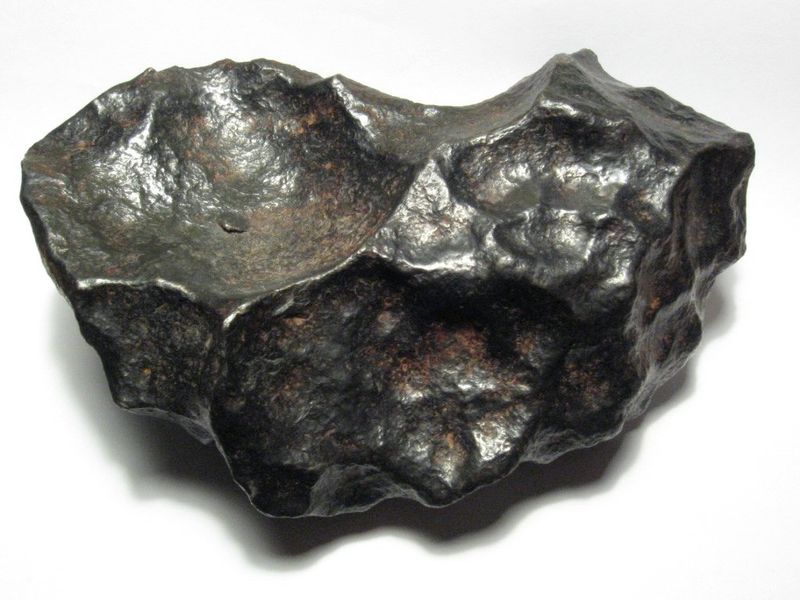 evidence that the molecules of life may have come from space.
evidence that the molecules of life may have come from space.
Led by Canadian researcher Dr Chris Herd, and publishing their results in the journal Science this week, the team think that some of the smallest molecules needed to build proteins formed out in space, in the swirling mess of forming planets and stars more than 4 billion years ago.
But that's not all - the new results suggest that some of this material got swept up into large asteroids, and modified through chemical reactions with water inside the asteroids, to create more complex chemicals. Then chunks of the asteroids broke off and went shooting through space, depositing these vital chemicals on earth - and probably many other planets too.
The researchers carried out detailed analysis on four pieces from the meteorite that had fallen in different places on the lake. They found evidence of many organic chemicals that are needed to make the building blocks of life, including simple amino acids, which are needed to build proteins.
Their results suggest that organic chemicals in the asteroid formed when dust mixed with ice out in deep space, then got heated up by radioactivity. This melted some of the ice, making liquid water that seeped through the asteroid, causing reactions that produced the chemicals needed to kickstart life when they fell to earth.
The team's results suggest that the levels of organic chemicals may vary widely even within the same meteorite. And from what we know about biochemical reactions, it's likely that there's a pretty small range of concentrations at which these chemicals can kick off the processes leading to the development of more complex molecules, and ultimately living organisms.
So while it's looking more likely that the ingredients for life may have been delivered from space, we also need to look at many more different samples from meteorites, to see what kinds of amounts of these chemicals are actually being dropped on the planet, and whether they would be the right amount to get life going.
Unlike most other meteorites that hit the planet, this one hit a sub-zero temperature frozen lake. Local people carefully gathered meteorite samples and kept them frozen, helping to reduce the chances of contamination. The scientists think that the samples from Tagish Lake are the cleanest ones we've got - almost as good as going up into space and sampling asteroids directly. But plans are also underway to send spacecraft up to sample material from asteroids, so hopefully there will be more answers coming our way soon.
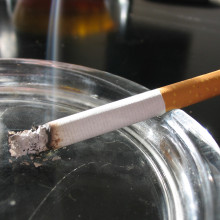
05:41 - How nicotine causes weight loss
How nicotine causes weight loss
Why ex-smokers commonly complain about gaining weight when they 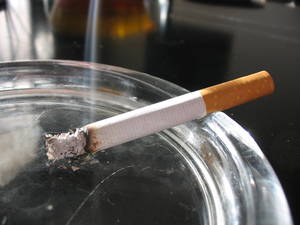 quit, and why active smokers are usually thinner on average, has been cracked by scientists in the US.
quit, and why active smokers are usually thinner on average, has been cracked by scientists in the US.
Nicotine has always been regarded as the prime suspect, because experimental animals lose weight when given the drug, but no one has ever worked out why.
Now, writing in Science, Yale scientist Yann Mineur and his colleagues have tracked the smoking gun to a region of the brain's hypothalamus concerned with appetite.
In this area, the team have found, are nerve cells activated by nicotine that make a chemical called proopiomelanocortin (POMC). When this substance is released from these cells into an adjacent, appetite-related region of the brain known as the paraventricular nucleus, it has an anorexic effect.
The team made the discovery in experimental mice by using drugs to selectively activate or block certain subclasses of the chemical docking stations, called acetyl choline receptors, that nicotine binds to in the brain.
One drug tested, cytisine, closely mimicked nicotine's appetite-blocking action. It binds selectively to acetyl choline alpha3-beta4 receptors, so the team used a modified virus to deactivate just these receptors in the hypothalami of one group of mice.
These treated animals ceased to lose weight when the nicotine-mimicking drug was subsequently given. Using a separate batch of animals, the team then made electrical recordings from nerve cells when nicotine was added, which revealed that the drug was triggering bursts of activity in nerve cells that produce POMC, suggesting that this might be the anti-appetite signal.
Consistent with this theory, mice from which POMC has been "knocked out" genetically do not show any nicotine-induced changes in appetite. And when the team used a modified virus in another group of mice to deactivate a gene called melanocortin 4R (Mc4R), which encodes the receptor for POMC, the food intake amongst these animals was also unaffected by nicotine.
Together these findings show that nicotine triggers a specific subset of POMC-producing nerve cells in the brain's hypothalamus. Acting via the melanocortin (Mc4R) receptor in the adjacent paraventricular nucleus, this damps down sensations of hunger and contributes to reduced calorie intake.
According to Mineur and his colleagues, the molecular clockwork of this pathway could be useful in producing new drugs designed to prevent weight-gain following smoking cessation, and also to tackle obesity and its related metabolic disorders.
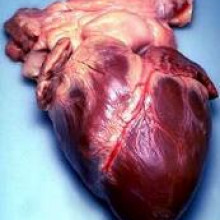
09:00 - Using Stem Cells to Fix a Broken Heart
Using Stem Cells to Fix a Broken Heart
with Paul Riley, University College London
Kat - Also this week, scientists have shown that the adult heart contains stem cells called epicardial stem cells that can be triggered by a signal called thymosin beta 4 to produce new muscle cells if part of the heart is damaged. This week, Chris spoke with the paper's author, Professor Paul Riley from UCL...
 Paul - The problem we were trying to address was the fact that the adult human heart is unable to repair itself following a heart attack, following injury. We were keen to exploit the fact that there is a cell type in the adult heart that is also found during development. They are found when the heart is actually forming during pregnancy and we wanted to try and recapture some of the potential of these cells, used during the building of the heart, to actually mend and repair the heart in the adult. The same as with that in a mouse.
Paul - The problem we were trying to address was the fact that the adult human heart is unable to repair itself following a heart attack, following injury. We were keen to exploit the fact that there is a cell type in the adult heart that is also found during development. They are found when the heart is actually forming during pregnancy and we wanted to try and recapture some of the potential of these cells, used during the building of the heart, to actually mend and repair the heart in the adult. The same as with that in a mouse.
Chris - So it sort of recapitulates the embryonic state in the disease state so that the damaged bit does regrow.
Paul - That's right. We're not the first group to describe the potential for stem cells that might be existing in the heart, but the cells that have previously been described are very rare, and in fact, they don't become heart muscle or blood vessel cells very readily. If they do, they're very mature so they're not really functional. What we wanted to do was to find a much more tractable or better target cell type and the cell type we chose contributes to both the blood vessel development and also to muscle cells of the developing heart. These cells are called epicardial cells.
Chris - And they're there in the adult, so they could be potentially recruited in an injury.
Paul - That's right. They line the outside of the muscle of the heart in the adult, and they're thought to have basically stopped doing what they need to do because they contributed during development and then their sort of activity if you like, is switched off. So the key thing from our point of view is to try and reactivate that program and to try and get those cells to turn the clock back, behave more like they do in the embryo.
Chris - And how did you actually approach that?
Paul - We already knew from some previous work that a very important protein called thymosin beta 4, if its function was lost in mouse hearts, the heart failed to form properly and didn't make the coronary blood vessels. The defect was at the level of these embryonic epicardial cells. What we then did was we took a huge leap of faith where we added thymosin beta 4 back to adult cells in preparations to try and see if thymosin beta 4 was both necessary during development, but also sufficient, to activate the adult cell type. Fortunately for us, thymosin beta 4 proved very good at making these cells divide, migrate and become in this instance smooth muscle cells, some fibroblast cells and also some endothelial cells. These are key cell types of both the coronary vessels and also the skeleton of the heart. What we didn't know at that time was whether or not they had the potential to make heart muscle and that's been the nature of this particular study.
Chris - What did you actually do to try and track what these cells could do in context of an injury?
Paul - This study was really based on two findings back in 2008 that said that the embryonic epicardial cells could also contribute to the muscle of the heart. In that study, one of the groups used a transgenic mouse. This mouse was driving a green fluorescent protein in the epicardial cells during heart development by virtue of one of the embryonic genes that's expressed. This is switched off in the adults so we reasoned that if we're reactivating any embryonic potential in these adult cells, maybe we're also really restoring embryonic gene expression. We took that mouse and added thymosin beta 4 for a number of days and we were able to switch on this green label of the adult cells. So what we've done then is we've reactivated an embryonic gene program and we were able to watch what those cells did in response to an injury, where we induce the heart attack in the mice. In this instance, we were able to observe a proportion of them becoming new heart muscle.
Chris - And there's no way that these glowing green cells could've come from any other source.
Paul - Well that is actually a really good question. In fact, it's a question posed to us by the reviewers of the study that we published in Nature. Their key point there is that we may have just been looking at existing muscle cells that have turned on the green fluorescent protein, so have just switched on the gene program in existing heart cells. What we have to do actually to disprove that completely was to do some cell transplantation experiments. We took cells that were labelled from a donor animal, that had undergone this thymosin beta 4 treatment and then injury, and put them into a non-transgenic unlabeled host mouse. That mouse had also undergone priming with thymosin beta 4 at injury. So we put green cells into, if you like, a white background within the heart and we were able to watch these cells then become heart muscles.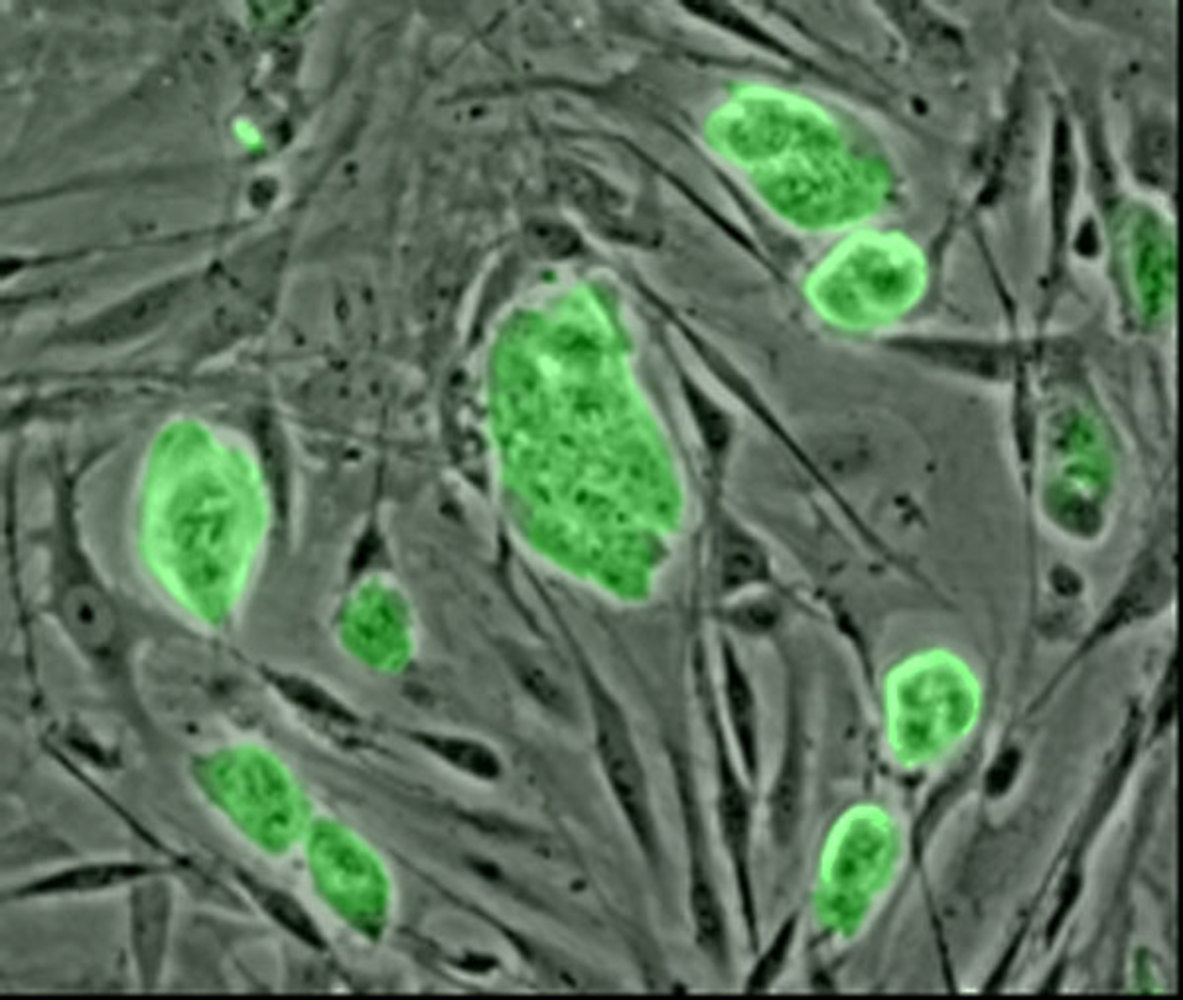
Chris - So the bottom line here is that you've identified there is a population of cells, all be it that they're in small numbers, and you can turn them on and they can locate the right place to go to and turn into the right sorts of cells to repair damage without people having to add new cells which has, up until now, been the dogma.
Paul - That's correct. So the key point was, yes, resident cells do exist in the heart that can be reactivated and when they do that they can repair significantly the damaged area. So we were also able to assess that functionally as well and assess heart function. That was done using magnetic resonance imaging studies where we showed that the heart function, as a result of this sort of treatment and so on, was improved by about 25%.
Chris - Which is a huge improvement and something no one even thought was feasible. That was Paul Riley from UCL and the next step in that research will be to produce an artificial form of thymosin beta 4 which is the agent that activates those stem cells.
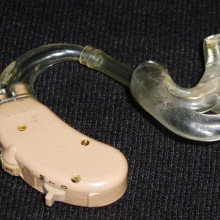
14:57 - Better Hearing for Dummies
Better Hearing for Dummies
with Professor Ray Meddis, University of Essex
Jane - Hearing aids work on the general principle that if you are finding it hard to hear something you simply turn the volume up. Fine if you are talking to one person in a quiet room, but if you are in a noisy environment then everything is amplified. Now unique computer modelling techniques, combined with new ways of carrying out hearing tests, are revolutionising the way that hearing loss and impairment is diagnosed and treated. Professor Ray Meddis is leading the work at the University of Essex.
Ray - Hearing consists of a number of stages between the sound arriving at the ear and then the signal going up to the brain. The computer model tries to represent each one of these stages separately. The test that we use involved two measurements, one concerns tuning and the other one concerns compression. Tuning refers to the situation where you can hear one sound and tune out background sounds. It's a bit like a radio where you can tune into one radio station, but you don't want interference from another station. Now with normal hearing this tuning takes place naturally so one of our tests focuses on that particular problem. Compression is concerned with how intrusive other sounds are when they become louder. So normally we can tune out another sound if it is quiet, but as it increases in intensity then we have more difficulty in tuning it out. A person with hearing loss often has a particular difficulty in tuning out irrelevant sounds and so our compression measure is particularly concerned with increasing the intensity of the sound and then noticing how that comes to make it difficult to listen to a particular vocal sound.
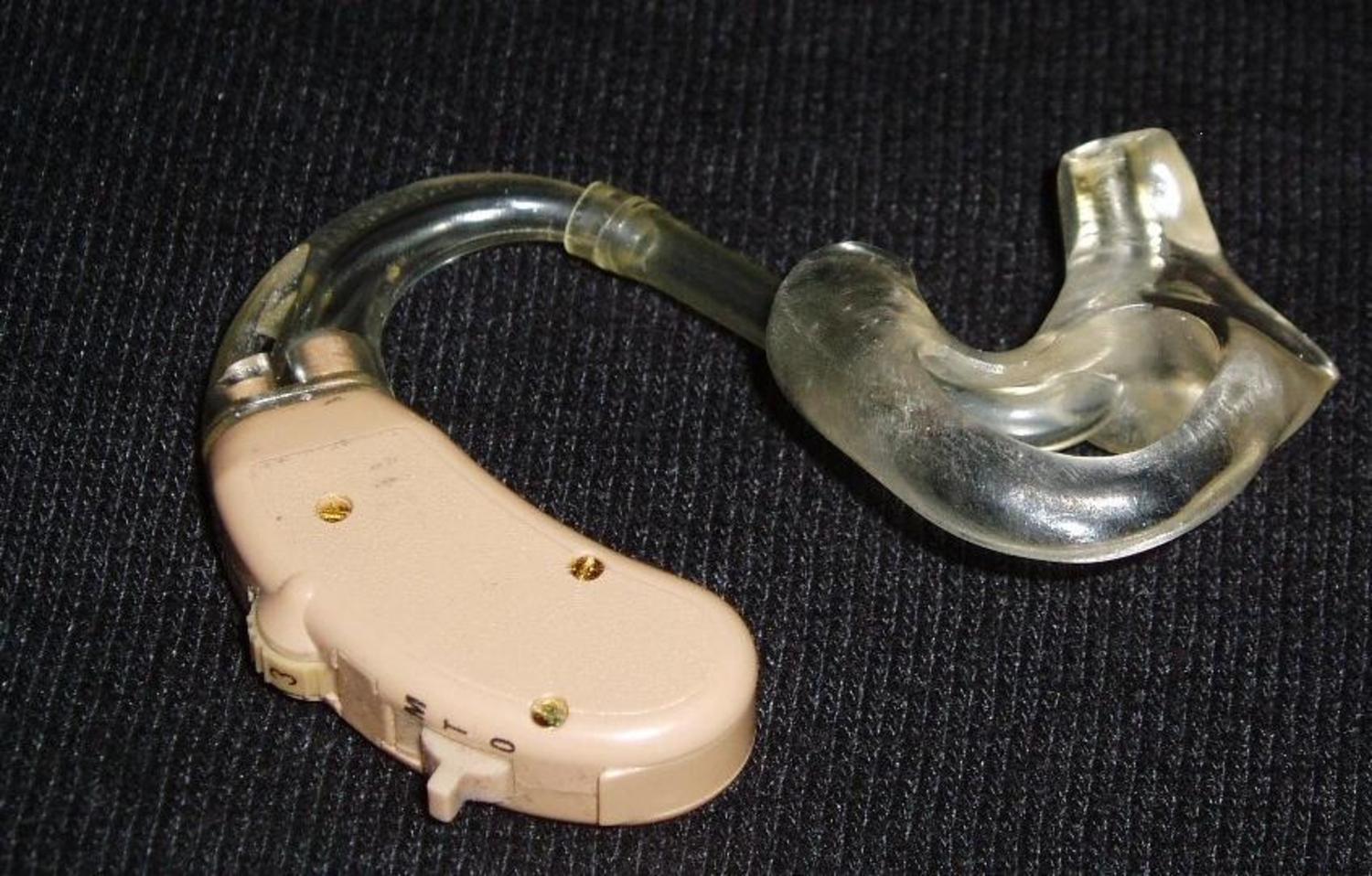 Jane - Strange as it may seem, it was the art of dressmaking that inspired Ray and his team to take this tailor-made approach to the diagnosis and treatment of hearing impairment.
Jane - Strange as it may seem, it was the art of dressmaking that inspired Ray and his team to take this tailor-made approach to the diagnosis and treatment of hearing impairment.
Ray - When generating a computer model for a patient with hearing loss, we always start off with a normal model and we try and make a single adjustment which refers to the particular pathology which we feel is causing the problem for that particular patient. When you have a dress made the tailor measures your body size then changes the shape of the dummy to represent your body size and then cuts and sews the clothing so that it fits the dummy. The reasonable expectation is that when the customer comes back the clothing will fit the customer perfectly. Now we believed that we could do the same thing with hearing impairment. We already have a model of normal hearing, so by making certain adjustments we could make the dummy simulate impaired hearing and the idea was we could then use that dummy to fit the hearing aid and we would adjust the hearing aid so that we got the best possible output from the impaired hearing dummy. Our hope is that we will be able to use the hearing dummy to make these adjustments before the hearing aid is supplied to the patient. In other words the hearing aid should be fitted to the dummy just like a dress would be fitted to a tailors dummy and then when the patient comes back, ideally, the aid should be perfectly suited to their particular needs.
Jane - Supported by the Engineering and Physical Sciences Research Council, this cutting-edge work has also led to a prototype design for a new type of hearing aid.
Ray - Because our primary interest was in developing computer models we came to realise that hearing aids respond differently to sounds compared to a normal hearing individual. So it seemed to us that we could build a hearing aid that simulated normal human hearing so it compressed the sound in the same way, tuned the sound in the same way and dealt with variations in level in the same way. We have designed a new type of hearing aid which uses something called instantaneous compression. Currently in hearing aids sound is compressed, but it takes a little while for the compressor to respond to the sound levels and this gives rise to some complications. But by simulating normal human hearing we've been able to produce instantaneous compression without the distortion which everybody used to believe was an unavoidable accompaniment of instantaneous compression.
Jane - So a number of aspects of this research are cutting-edge.
Ray - The research is a world first in a number of respects. First of all this will be the first model to represent a number of different kinds of hearing impairment. It is also the first attempt anybody has made to go through the complete cycle that is measuring the hearing loss, designing the hearing dummy, adjusting the hearing aid using the hearing dummy and then modifying the hearing aid to suit the patient.
Jane - The new approach has simplified the complicated laboratory testing process, significantly cutting down on the time it takes and the number of trials involved, along with the level of expertise required. Within four years we could see this system of testing in widespread use, along with the new type of hearing aid.

21:37 - Planet Earth - Cloud Forming Trees
Planet Earth - Cloud Forming Trees
with Catherine Scott, University of Leeds' Institute of Climate and Atmospheric Science
Kat - The benefits of planting trees, from improving air quality to providing a habitat for wildlife, are well known. Now there's another, much loftier, effect. Small particles released by tree leaves can also cause clouds to form. Planet Earth podcast presenter Sue Nelson met Catherine Scott from the University of Leeds Institute of Climate and Atmospheric Science.
Catherine - During the life of a tree it will take in a certain amount of carbon from the atmosphere in the form of carbon dioxide. It does that as part of photosynthesis when it also releases oxygen back into the atmosphere. What we're interested in looking at are other gasses that trees release into the atmosphere. So if you're walking through a forest you can smell a kind of piney odour and that's because of these other compounds, volatile organic compounds. They're things like isoprene and monoterpenes.
Sue - What in particular are you interested in about them?
Catherine - These compounds are incredibly important because when they're released into the atmosphere they undergo reactions with a class of compounds called oxidants and that's things like ozone. Following those reactions they're able to form tiny particles in the atmosphere via a number of different mechanisms that scientists are still trying to get a clear idea about, but we know that it happens. So it's the impact on the climate of these particles that we're really interested in looking at.
Sue - So what role do these particles play then?
Catherine - Well, we know that they have two main effects. Firstly, while they're present in the atmosphere they can interact with incoming solar radiation, the energy from the sun essentially, and perturb its path so that it doesn't make it to the earth's surface and scatters it. Additionally, and what we're most interested in looking at here, are the role that these particles play in brightening the clouds that are above the forests. They do this because when they're in the atmosphere they grow and get to a certain size where they're able to form cloud droplets. The more of these droplets that there are in a cloud, the whiter and brighter it becomes. That means that it will reflect away more of the incoming solar radiation.
Sue - That's amazing. So if you've got an area where you've got a lot of trees in a forest and they're producing these volatile organic compounds which produce particles, you're likely to see the brighter whiter clouds above them. Is it that they're sort of producing their own clouds then - brighter, whiter, fluffier clouds?
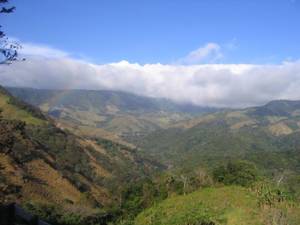 Catherine - Essentially, yes. There's a number of other processes that govern the actual formation of the clouds but what we're interested in looking at is just how significant the impact of these particular particles are on the clouds, how much of that effect we can credit to the original compounds that are released by the trees essentially.
Catherine - Essentially, yes. There's a number of other processes that govern the actual formation of the clouds but what we're interested in looking at is just how significant the impact of these particular particles are on the clouds, how much of that effect we can credit to the original compounds that are released by the trees essentially.
Sue - What would a brighter whiter cloud then do for a forest? Because normally nature has a way of, you know, what's in it for them sort of thing. There's normally a beneficial effect for the forest perhaps, but maybe not necessarily on the climate, or is it beneficial to both the climate and the forest?
Catherine - Well, we think that these particles are beneficial to the forest because of the way they scatter the radiation as it comes in. It's scattered into different directions which means that more of it is available for the leaves of the trees to use, and that's something that we think is really quite important. As for the climate, the problem that we've got at the moment with climate change is that there's an inbalance between the amount of solar energy that's coming into the earth's system and the amount of energy that's allowed to escape from the earth's system through the atmosphere. The more carbon dioxide and other greenhouse gases that we have in the atmosphere the less of this radiation is allowed to escape. So the main way that we're trying to address this is by reducing greenhouse gases in the atmosphere, allowing more of the radiation to escape. Something else that we can do is try and reflect away more of the sun's radiation so that less of it gets in in the first place. That's another way we can address this energy inbalance.
Sue - Because a white cloud will reflect more solar radiation.
Catherine - Yes, essentially. So what we're trying to do is quantify this effect using computer simulations so that we can understand exactly the impact that forests are having on the earth's system at the moment.
Kat - That was Catherine Scott from the University of Leeds chatting to Sue Nelson about the impact of forests on fluffy white clouds and the climate. And you can find more Planet Earth online resources at thenakedscientists.com/planetearth.
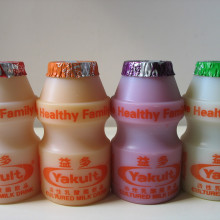
26:45 - Friend or Foe? - Gut Bacteria and Probiotics
Friend or Foe? - Gut Bacteria and Probiotics
with Dr. Karen Scott, Aberdeen University
Kat - Now, you can't turn on the telly without seeing some woman drinking yoghurt and then dancing around for all that she's worth. We're very familiar with the idea of friendly bacteria. Foods, drinks, and supplements that promote healthy gut flora could be found in all the supermarkets. But what are all these about? What are friendly bacteria? How are they different from bad bacteria and what do they actually do? To find out, we're joined by Dr. Karen Scott from Aberdeen University. Hi, Karen.
Karen - Hello.
Kat - Thanks for coming on the Naked Scientists. Now let's get bacterial with this. Tell us about the sort of bacteria that are in our gut. What are they? What are they doing there and how did they get there?
Karen - Well, there's actually a large number of bacteria in the human gut. In fact, we could almost be said to be carrying more bacteria in our bodies than there are actually human cells. These bacteria are very important in helping us to digest the foods that we eat all the time.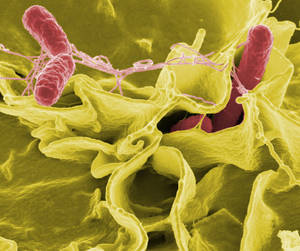
Kat - Where do they actually come from? Are we born with these bugs in us?
Karen - Newborn babies are colonised as they're born effectively. So although our guts are actually sterile when babies are in the womb, as soon as they're born they start to pick up bacteria from their mothers or from their environment and we rapidly become colonised by our gut bacteria. The bacteria that are in an infant consuming milk are actually different from those that are in a developed adult. It's around the time of weaning when the types of bacteria that are present start to change. This is because the bacteria composition depends very much on the food that we eat. By the time a child is aged say, 2, 3, 4, they probably have a very similar gut bacteria to an adult.
Kat - Now I'm sure any parents listening will be aware that their child's digestion changes quite significantly at that kind of age, but what are these bacteria actually doing for us in our gut? Presumably, you're talking about the kind of the good bacteria that are helping us out.
Karen - Yeah. I should've said that. Although the bacteria that we hear a lot about in the news are the bad bacteria, the pathogenic bacteria, the vast majority of bacteria that live in our gut are very good for us. They're actually very important to maintain a healthy gut. They help us because, when we eat, much of the food that we eat we are unable to digest ourselves. We don't have the enzymes that are required to degrade much of this food material. When it reaches the colon, the plant fibres for example haven't been digested at all higher up in the gastrointestinal tract, and there we completely depend on our bacteria in our colon to digest these fibres for us, and gain some energy from them.
Kat - So, some of the questions that this throws up to me is how much of our energy is actually coming from bacteria?
Karen - It's thought that about 10% of our energy might come from these gut bacteria. That's not to say that the bacteria are making us fat because the energy is in the form of short chain fatty-acids. These bacteria are carrying out fermentation reactions and these acids that they produce are actually extremely essential for the health of the colon. One of the acids in particular, a compound called butyrate, is protective against colon cancer. In general, having a slightly acidic colon actually prevents the growth of the pathogenic bacteria like E. coli because these bacteria can't grow under acidic conditions. So by maintaining the fermentation that happens by your good bacteria, you can keep out the bad guys that you don't really want in there.
Kat - So what sort of foods are we talking about? Fruit and veg, and that kind of thing?
Karen - Yeah. I mean, it's plant material, carbohydrates and resistant starches. All these sorts of materials reach the colon and are digested by the bacteria that are there. You can actually manipulate the composition of your gut bacteria if you want, by changing your diet. You can do this for better or for worse, depending on which way we change it.
Kat - Now I live with three guys, and I'm well aware of the effects for example, of when they eat things like beans on their guts' activities. So most of the gas that we produce in our guts, is that down to the bacteria?
Karen - Yeah, that's right. I mean, these short chain fatty acids for example are volatile compounds and they are pretty smelly really. Some of the gases that are produced are released in flatulence or oral belching, but that's not to say it's a bad thing. What happens, which is very interesting, is that some of the population have certain bacteria that make smellier farts if you want, whereas other people have a different type of bacteria and they don't tend to be as smelly. So they might be producing just as much gas, but you just can't detect it quite as well it seems.
Kat - I'd say that was the clearly the female half obviously. So you mentioned that we can change the composition of our gut bacteria, say switch it from being some nasty ones to being more good bacteria, and we are bombarded with these ideas that you just drink this little yoghurt drink and that's going to give you all the stuff for your friendly bacteria. What's in these yogurt drinks and do people actually need them? Are they doing us any good?
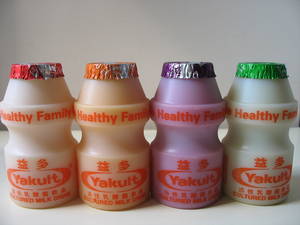 Karen - Well that's an interesting one. The yogurt drinks actually contain a bacterium themselves. So, when you consume those yogurt drinks, the manufacturers are actually giving you their bacterium. All these yogurts have slightly different bacteria in them because they're all patented, and each manufacturer has a slightly different bacterium that they put in their drinks. Now these bacteria have all been categorised and they're all very safe. They're not going to do you any harm, but in general terms, you're putting - say one pot of yogurt might contain around 100 million bacteria - and you're putting them in your gut, up against a million, million bacteria. So, they really are outnumbered and I think, in my opinion anyway, it's much better to try and encourage the growth of the bacteria that are already there, so your normal healthy bacteria. You can do that by increasing the intake of carbohydrates and fibre, but the other way that food companies are trying to do this is by introducing what they call prebiotics. The yogurt and stuff that contains the bacteria in the yoghurt are called probiotics. Prebiotics are actually carbohydrate-like compounds that again, we can't digest. They go straight through to our gut and our bacteria that are always there can grow on these prebiotics. They're sort of targeted to help the growth of the good bacteria in our guts.
Karen - Well that's an interesting one. The yogurt drinks actually contain a bacterium themselves. So, when you consume those yogurt drinks, the manufacturers are actually giving you their bacterium. All these yogurts have slightly different bacteria in them because they're all patented, and each manufacturer has a slightly different bacterium that they put in their drinks. Now these bacteria have all been categorised and they're all very safe. They're not going to do you any harm, but in general terms, you're putting - say one pot of yogurt might contain around 100 million bacteria - and you're putting them in your gut, up against a million, million bacteria. So, they really are outnumbered and I think, in my opinion anyway, it's much better to try and encourage the growth of the bacteria that are already there, so your normal healthy bacteria. You can do that by increasing the intake of carbohydrates and fibre, but the other way that food companies are trying to do this is by introducing what they call prebiotics. The yogurt and stuff that contains the bacteria in the yoghurt are called probiotics. Prebiotics are actually carbohydrate-like compounds that again, we can't digest. They go straight through to our gut and our bacteria that are always there can grow on these prebiotics. They're sort of targeted to help the growth of the good bacteria in our guts.
Kat - So it's pretty obvious that we have evolved to have these bacteria and they're helping us digest our food and keep us healthy. Do most people need help with their gut bacteria?
Karen - I think as long as you consume a generally healthy diet and a varied diet, because there are many many different types of bacteria in the gut. There are over 500 different species of bacteria and they all have slightly different 'eating habits' if you want, so as long as you have a generally good healthy diet, then yes, your gut bacteria will be functioning adequately. But sometimes you may inadvertently cause a shift in your bacteria and they may then need a little help to re-establish a good bacterial profile. That's when these probiotic products are actually quite good for you, and I'm talking probably antibiotics is the main thing really there.
Kat - We've started to hear some stories lately on the Naked Scientists about how our gut bacteria may be having a much bigger impact say, on our immune system. Do you think that this kind of area is going to become much more important in the future?
Karen - I mean, it's certainly been established that in a very early life your immune system is sort of primed by your gut bacteria. The immune system is in contact with our normal gut bacteria all the time and it's constantly sampling these bacteria, and it knows not to react to them. It knows not to get inflamed and cause a very big immune response to our normal bacteria. That's how it knows when it encounters something it's not used to, then it can react to that. We need that to happen in order to stop getting sick. This happens from very early life and is part of the hygiene hypothesis, which is where perhaps if you try to stay too clean then you don't get this constant priming of your immune system. In some cases, that may mean that you over react to what should not normally cause a bad reaction.
Kat - Thanks very much for that, Karen. That is Dr. Karen Scott from the Microbial Ecology Group at the University of Aberdeen.
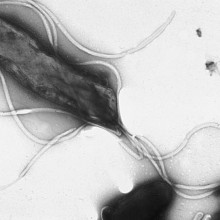
36:18 - Ulcer Causing Bacteria - Converting the Enemy
Ulcer Causing Bacteria - Converting the Enemy
with Barry Marshall, QE2 Medical Centre in Perth
Chris - In 2005, two Australian researchers, Ron Warren and Barry Marshall, won the Nobel Prize for their discovery in the 1980s of the bacterium Helicobacter pylori, which causes ulcers and stomach cancers in some of the people who carry it. Compared with the past though fewer people today actually carry it, but many of those who do harbour the bug without any apparent harm. This has taken Barry in an entirely new direction since.
 Barry - If everyone in the world used to have it until the last 100 years, maybe it was doing something useful for humans. When humans didn't have much acid secretion, we didn't have much protein in our diet. In the stone age we probably had malnutrition half the time. Then Helicobacter really couldn't do much because we didn't have enough acid to develop ulcers and we didn't live long enough to get cancer. So Helicobacter in that situation was almost symbiotic, but what was it there for? We still don't know. However, in the 20th century, talking about the clean and hygienic theory of why people get so much asthma, allergies, things like that, we're all too clean. Maybe the kids should be out in the backyard eating dirty stuff, dirt and what have you. So Helicobacter, if you have it, puts you more back into the 19th century hygiene mode, and there's some data that suggests that children with Helicobacter have less chance of having asthma or eczema, around 30% less risk.
Barry - If everyone in the world used to have it until the last 100 years, maybe it was doing something useful for humans. When humans didn't have much acid secretion, we didn't have much protein in our diet. In the stone age we probably had malnutrition half the time. Then Helicobacter really couldn't do much because we didn't have enough acid to develop ulcers and we didn't live long enough to get cancer. So Helicobacter in that situation was almost symbiotic, but what was it there for? We still don't know. However, in the 20th century, talking about the clean and hygienic theory of why people get so much asthma, allergies, things like that, we're all too clean. Maybe the kids should be out in the backyard eating dirty stuff, dirt and what have you. So Helicobacter, if you have it, puts you more back into the 19th century hygiene mode, and there's some data that suggests that children with Helicobacter have less chance of having asthma or eczema, around 30% less risk.
Chris - So you can trade an ulcer for asthma instead.
Barry - Right, that's correct. But if we study Helicobacter, maybe we can get the best of both worlds. You see, maybe we could have a Helicobacter that didn't actually hurt you, but actually down regulated the immune system or was a useful treatment for something like asthma. People are starting to get very excited about Helicobacter as possibly a super probiotic and my work is currently on that. Not so much in probiotic, but more like using Helicobacter as a vaccination because if you could use it as a vaccine delivery vehicle - I'm going to explain that in a minute - then you'd have a vaccine the people would drink and buy it in the supermarket. Or it would just be a little capsule that they would get from the pharmacy, and it would not require going to the doctor or prescriptions or your poor little child having all these vaccinations. There's so many vaccinations these days, it's getting out of hand.
Chris - So what are you actually trying to do? You're trying to produce an attenuated form of H. pylori that won't trigger the ulcerogenic (ulcer provoking) outcome but will nonetheless confer what we think are these positive benefits, this symbiotic benefit, from having an infection with the agent?
Barry - That's correct. So, we could see that most of the Helicobacter that cause ulcers have got certain toxins in them. We can choose one that doesn't have the toxin, or we can choose strains from people who have had absolutely no symptoms all their life. We have collected these types of strains for example, from elderly people who never had those illnesses but have Helicobacter. So we've got those strains and we can then say, "Okay, well let's clone in the DNA from the flu virus H1N1." So that takes maybe two weeks to do. Now we've got a Helicobacter that doesn't hurt you, but it's got flu virus particles sticking out of its surface. So theoretically, if you now drink that one, your immune system will react against the flu virus and the Helicobacter at the same time and you should be vaccinated against the flu. That would be great because if you had a new flu pandemic you could have 200 million doses of this type of product in 8 weeks. You wouldn't have to have a massive warehouse with 100 million pounds worth of vaccine which is going to go out of date in 12 months and you'd have to throw it away. You would just have your little ampule of your vaccine strain, ready for emergencies, and you could easily scale it up. You just then borrow one of the fermenters at the Guinness factory and you'll have a million cans of it in a week or so. So, I'm pretty sure that that is where vaccination is going to go. You're tricking the immune system into doing something it does naturally, but do it without actually having to have an injection or the flu virus itself.
Chris - So you'd foresee a big library of H. pylori which will present various microbial epitopes (antigens) which would then stimulate an immune response, all be it in the context of an H. pylori infection. You could keep on superdosing people with different strains, with these different antigens in them, to fulfil their normal requirements of a vaccination repertoire that we'd give to kids.
Barry - So we'd have a Helicobacter which doesn't make you sick and it only lasts for a few weeks or a month, or so. So, this type of illness you can imagine is a bit like having dandruff in your stomach. That's the level of irritation you get, but it's enough to actually stimulate the immune system. The other thing about Helicobacter is that you can put potentially four or five different things on it. You see, you can put the flu virus on the flagella, you could put rubella on the inside, and you could put whooping cough (Pertussis) on the back of it. There are a lot of different places where we can construct the proper antigen and give it to somebody. So, we're gearing up now for clinical trials. We are kind of getting back into humans. So, if you see somebody outside my hospital throwing up, they might not actually be a patient. They might be somebody in one of my research studies because we are currently dosing people with these Helicobacters, trying to find the right one which is going to be harmless, but could potentially vaccinate you.
Chris - Barry Marshall, speaking with me at the (QE2) Medical Centre in Perth in Western Australia.
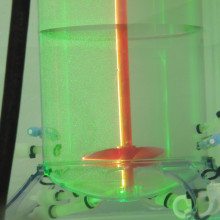
42:22 - Naked Engineering - Bioreactors to Grow Your Bacteria
Naked Engineering - Bioreactors to Grow Your Bacteria
with Martina Micheletti, University College London
Meera - For this week's Naked Engineering, Dave and I are exploring the field of fluid mechanics, so the forces and movements of fluids such as liquids and gases. But Dave, this is still quite a big area so what are we focusing in on?
Dave - Yes. Fluid dynamics is a huge area, ranging from aircrafts to things which are much smaller scale and actually things that you come across in everyday life. One of the very difficult bits of fluid mechanics is when 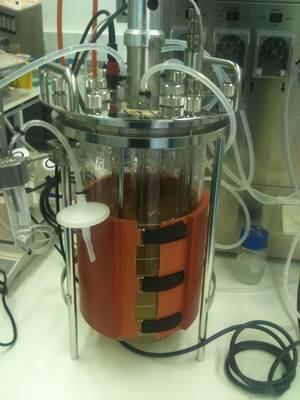 you have more than one phase - so a solid and a liquid, or two different types of liquid, or also liquid and gases - all mixed together. Studying how these mix together and how they interact is very, very important at all sorts of scales, not least when you're cooking, or on a much larger industrial scale doing chemical reactions, or even biological reactions.
you have more than one phase - so a solid and a liquid, or two different types of liquid, or also liquid and gases - all mixed together. Studying how these mix together and how they interact is very, very important at all sorts of scales, not least when you're cooking, or on a much larger industrial scale doing chemical reactions, or even biological reactions.
Meera - To find out a bit more about this mixing process on an industrial scale biologically, we've come along to University College London this week to meet Martina Micheletti who's a lecturer in Biochemical Engineering. Now Martina, your particular area is bioreactors?
Martina - Yes. A bioreactor basically refers to reactors in which drugs are actually produced by lab organisms, for example microbial yeast or a mammalian cell culture. They need an aseptic environment and have a lot of sterilisation issues.
Dave - Essentially, it's a tank where you can grow lots and lots of cells which have been bred or engineered to produce a useful product. Quite often a drug.
Martina - Yes. So, the kind of geometry they will use, the most common one, is a sort of cylindrical tank with a rotating impeller in the middle. The mixing is achieved by stirring and there is an impeller, which can be of different designs, rotating at a certain speed.
Meera - So a bioreactor is essentially a vessel where you're trying to culture cells. What are you actually doing inside this, or what are the conditions inside it, to allow these cells to culture and be happy?
Martina - Definitely you need some sort of a food. So nutrients - usually in the form of powders in an aqueous medium. But cells, in order to live and grow, they need oxygen. We usually have a pre-filtered air inlet inside the bioreactor. Also, live organisms have got required temperatures and pH. Usually, temperature can be 37 degrees and pH can be pH 7. So temperature and pH have to be controlled as well.
Dave - I guess if you've got quite a big vat full of cells, a really major issue is to make sure all the cells are happy at the same time.
Martina - Definitely. So, what you need mixing for is, first of all, to actually maintain a suspension of cells so they don't sediment. You also need to mix the nutrients, so again they can be taken up by the cells.
Meera - So you've got gases and you've got nutrients in there, all of these need mixing, for which you've got a propeller. Do you essentially just keep this going very fast to get things mixed?
Martina - Well you know, you'd think so. However, there are a number of issues. A lot of these organisms are quite fragile. Mammalian cells for example don't have a cell wall. Some impellers produce quite high shear rates and that can be detrimental.
Dave - So the shear is just the rate of change of velocity. So if you've got one side of the cell going a lot faster than the other side of the cell it will get ripped apart.
Martina - Yes. When we take an individual cell inside a bioreactor, that's going to be subjected to different forces and force stresses.
Meera - So how do you set about monitoring the flow through the vessel, how things are mixing, and the forces in there?
Martina - What we really want to get is a flow pattern of the impellers as well as have a quantified turbulence level and also get an idea of the sort of energy which is dissipated by the impeller. There are a number of techniques to do these. I would say that the most advanced one is laser based. One of them is for example, particle image velocimetry.
Meera - So we've got a laser here which is pointing at a scaled down bioreactor vessel. It's about 15 centimetres in diameter and it's got a propeller going through the middle of it. It also has a misty fluid in that vessel.
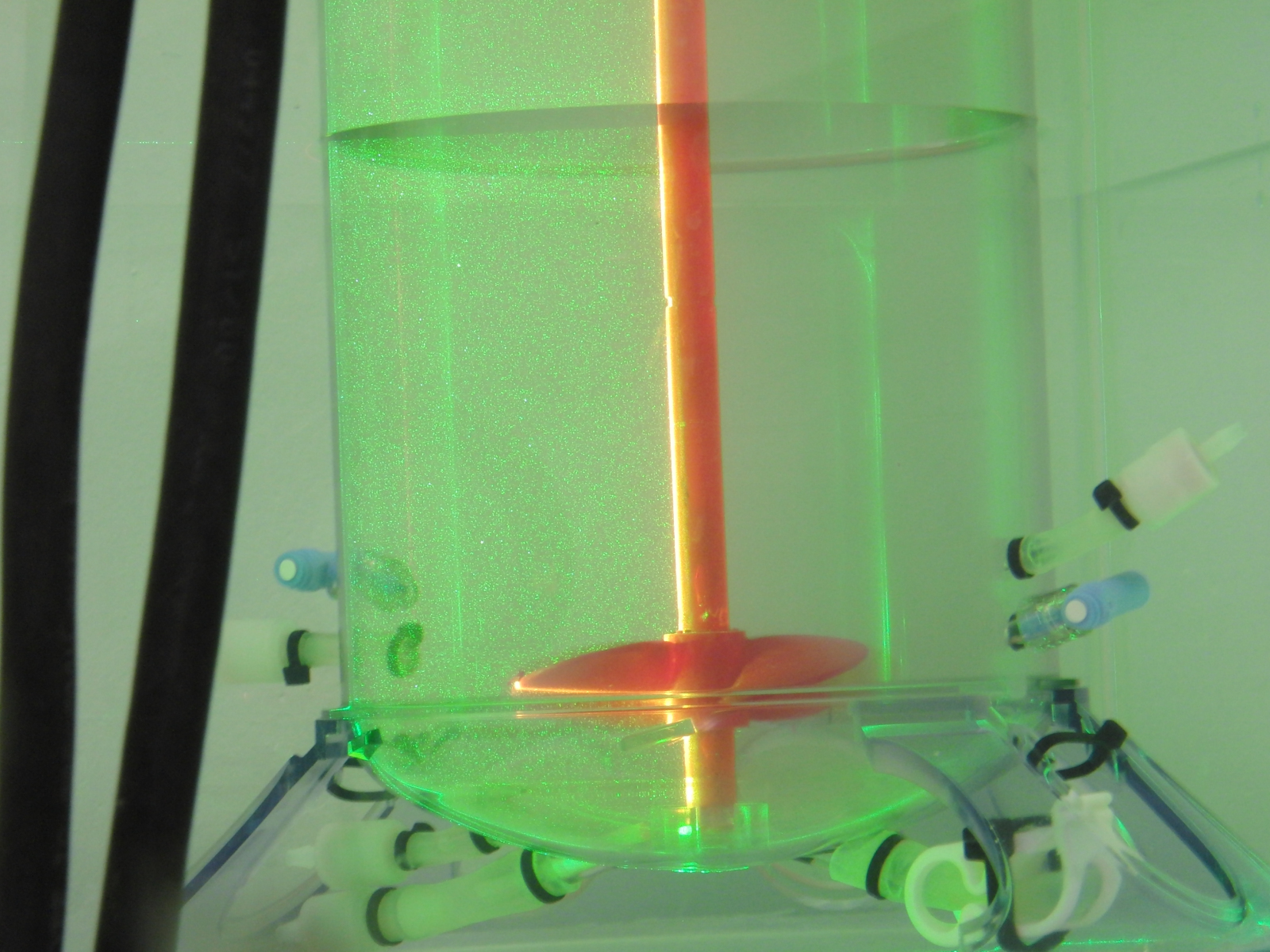 Martina - It's an image technique essentially that works with seeding particles that follow the fluid.
Martina - It's an image technique essentially that works with seeding particles that follow the fluid.
Dave - So the problem with seeing how the fluid is moving is that the fluid is transparent and you can't see it. So you've added seed particles which are very very small and will move with the fluid. So, if you know where they're moving, you'll know how the fluid itself is moving.
Martina - Exactly. So in fact, I can turn it on now and show you.
[Laser turned on]
Meera - So you set it going now and this clicking sound that we can hear is the laser firing quite frequently at the vessel in front of us.
Martina - This is basically a high power laser that is producing two pulses at a known time interval. I set it at 1 millisecond from each other and it is basically producing a light sheet inside the bioreactor.
Dave - So you're using a sheet rather than just illuminating the whole bioreactor. So you're only illuminating the particles in that sheet and you get a sort of 2-dimensional picture.
Meera - How does putting a sheet of light over this allow you to see the velocity of these seeded particles?
Martina - There is a high speed camera just in front of the bioreactor which is focused exactly on the actual plane where the laser is firing. The cameras can actually take two images and the camera is synchronised with the laser, so it's going to take the two images at the same time intervals as the laser pulses. The two images are then cross correlated to actually find out the average space travelled by a particle.
Meera - But now, on a computer screen here, we can see quite a close up image of the propeller and the seeded particles moving around it.
Martina - Based on the images that you see now, the computer is then able to actually get a lot of information about the velocity of each of the particles at that location and at that time.
Dave - A bit like how a speed camera works, it will flash twice and look at how your car has moved in between, so you have then got to use a computer to work out how far these particles have moved.
Martina - Yes, exactly.
Meera - How are you then using this information about the velocity of the particles?
Martina - I'll give you an example. We found recently in these type of bioreactors  that there were a number of instabilities. Basically, we found the existence of a vortex processing around the impeller shaft at a known frequency. By actually locating the feeding pipe, which is used in a bioreactor for example to feed glycerol to the cells when they need it etc, exactly inside the vortex it would decrease the mixing time (the time needed to achieve full mixing) by 50%. Which is quite a lot of energy saved.
that there were a number of instabilities. Basically, we found the existence of a vortex processing around the impeller shaft at a known frequency. By actually locating the feeding pipe, which is used in a bioreactor for example to feed glycerol to the cells when they need it etc, exactly inside the vortex it would decrease the mixing time (the time needed to achieve full mixing) by 50%. Which is quite a lot of energy saved.
Meera - And I guess also, when it comes to the manufacturer of say bioreactors, you've got a 15-centimetre scaled vessel here but then hopefully you'll be able to scale this up for the industrial level of pharmaceutical companies?
Martina - Scale up studies are something that are very sought of after by industry. This is a 2-litre vessel but we go even lower down to 2ml scaled vessels. All the fluid dynamics information that is small scale would allow a pharma company for example to actually come and scale up the production of a drug from a 2-litre scaled to a 200-litre possibly.
A video of this research can be seen at
thenakedscientists.com/engineering.
Do antibiotics kill good bacteria?
Karen - A lot of antibiotics prescribed are indiscriminate and they will kill our good bacteria as well as the targeted bacteria that they want to kill. They do destroy your gut bacteria and that's sometimes why, when you take a course of antibiotics, you get an upset stomach, diarrhoea et cetera. The best way to try and avoid that is to take some of these probiotic yogurts whilst you're taking the course of antibiotics and possibly for a week or so afterwards. Just to give your own bacteria a chance to recover because although a certain number of your own bacteria will get killed, and that can cause the upset stomach, there are still enough left there that they will regenerate once the antibiotic pressure is removed. Chris - It's often said that the spectrum of bugs that you have in your intestines is more unique to you than your own fingerprint is. So if antibiotics wipe out some of those bacteria, can you actually get back the very ones you had before or do you end up substituting some that are vaguely right, but they're not exactly what you had previously? Karen - Generally, they do all come back because if you imagine the surface of the gut is like your fingers. There are deep crypts and everything is in there, so the bacteria find hiding places away from the antibiotics. So generally, most of them come back again. There are certain bacteria that seem to be particularly susceptible and can get lost. One of them for example is a species called oxalobacter and if you don't have oxalobacter, you're more likely to get kidney stones. Oxalobacter can be eliminated forever with certain antibiotics.
How can bacteria be seen with a microscope?
The best way to see them using a microscope is by staining them. You can buy some specific stains that will make the bacteria appear as pink or purple rods or Cocci, depending on what bacterium it is, and then it is very easy to see them through a normal light microscope.
How many calories do bacteria consume?
Karen - About 10% of our energy comes from bacteria, but probably, the important point of that is that the energy is in the form of these short chain fatty acids that are actually very helpful to us. The bacteria produces short chain fatty acids that we then absorb and they're used by the gut epithelial cells to grow. So they're not actually going to be deposited in fat cells in our body or anything, but they're used to regenerate the lining of the gut.
Chris - I did also find one quite nice reference - Royal Society's proceedings B, Anastasia Makarieva in 2005 asked, "Do bacteria breathe at the same rate as whales?" and they found that bacterial cells do have the same metabolic rate as whale cells do. Twenty two watts per kilol. It's an interesting sideline that the human body has got about 1013 cells in it, so bacteria outnumber us 10:1 with 1014 and since the bacterial cell weighs 10 -12 grams per cell, that means that in the average person is 100 grams of bacteria which means that your bug load weighs almost as much as your kidneys!
What are the most helpful microorganisms in a mammal's body?
I would say that the microorganisms in your gut are the most helpful, but then I would say that since I work on them. But in terms of specifics then there are two main species that we are most interested in. They are very helpful in producing butyrate, which is protective against colon cancer, and are called Roseburia and Faecalibacterium prausnitzii. Faecalibacterium prausnitzii has also been shown to not be present in people who have Crohn's disease. So there's currently a lot of work going on in various countries around the world to try and see if you can re-introduce that specific bacterium back into patients who have Crohn's disease and whether you can avoid or alleviate the symptoms.
Would an astronauts diet affect the gut bacteria in Crohn's disease patients?
Chris - For people who have Crohn's, if you put them on astronaut food, so an elemental diet with just the nutrients they need and nothing else, their Crohn's got better. So what does that do to their bacteria then? Karen - I mean, that's a very severe treatment I think overall. That would be a sterile diet I presume. There'd be no bacteria in that astronaut diet. Chris - I don't think so. The other point about it is that it's literally just nothing more than the nutrients you need and in no more excessive quantities than what you would want. It tastes awful apparently and it's very miserable to eat it. It has life prolonging effects only because it makes you feel like you're living forever because life is going so slowly. But it does apparently make people's Crohn's disease regress completely. Karen - I mean I don't really know about that but I imagine that most of those nutrients will be being absorbed in the upper gastrointestinal tract. So what you're almost trying to do there is starve the bacteria in your colon and reduce the numbers of them so that they no longer inflame the cell wall of the colon, because that's what causes Crohn's disease is, an inflammation of the colon. So if you try to stop or try to eliminate the bacteria that are normally present there by starving them, by only feeding the person food that is all absorbed higher up in the gastrointestinal tract, then that might be part of the reason that works.
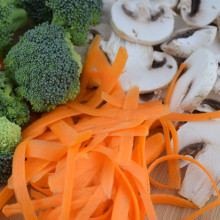
Is there a reliable way to make salad vegetables safe without cooking them?
Karen - A good question. I mean, the really important thing about the EHEC is that it requires very, very few bacteria. If your food is contaminated then you basically have to bleach it to get rid of them and make it really safe. We really don't want to do that because the toxins and the bleach would be harmful in themselves. Washing as thoroughly as possible as well, and hoping I suppose. I mean, that's a really difficult question because as you say, you can't cook salad vegetables, and you don't necessarily not want to eat them because of the chances of them being contaminated. As long as they're not from a source where this contamination has been found the risk is actually quite low. I don't know the answer to that question.
Chris - Because when people make motorway service station sandwiches and things like that, the salad in these pre-prepared sandwiches has already been washed in a weak solution of bleach, hasn't it? And I guess the problem with these bugs is if they get into small imperfections in the surfaces of the vegetable, so little nooks and crannies there, the bugs can lurk. The infectious dose is so low, it's just a handful of organisms at most that actually cause disease, and as you peel it, boil it, or leave it, then you're pretty likely to get it.
Karen - I mean, that's exactly right. Yeah, I mean, even washing them in a weak bleach as you say, they'll be lurking. If they're there, they can lurk right down in bits that will not be penetrated by the bleach and you still eat them. Yes, 6 to 10 will actually cause an infection of these particular bacteria.
Do births by caesarean section reduce bacterial immunity?
There haven't been a huge amount of studies done comparing caesarean and normal birth, but I think if at all possible, then a normal birth is actually preferable because as you say, the baby is sampling the mother's bacteria as it's being born. It's also immediately encountering the mother's skin bacteria as well as soon as it's put to the breast and things, and that is definitely an advantage. I think in the greater scheme of things whether it has a long term effect on the health of the child, that's really still up for debate.

59:25 - Have earthquakes been more frequent recently?
Have earthquakes been more frequent recently?
We posed this question to Gopal Madabhushi from the University of Cambridge...
Gopal - Hello. This is (Gopal Marbushi). I'm a reader in geotechnical engineering at the University of Cambridge. It is true that large earthquakes have happened in close succession recently. For example, two larger plates in Christchurch in New Zealand and a very large earthquake in Japan. However, the fault systems in Japan and New Zealand are quite separate and there are no interconnections between them so, the earthquakes occurring together is a pure coincidence. Having said that, the two earthquakes near Christchurch may be interconnected, with stress release from one fault affecting the other. If you live in a seismic area, it is always better to consider earthquake proofing your house. Diana - Earthquakes haven't occurred anymore in the last 20 years than they have done over the last century, but we have far more seismograph stations and much better methods of reporting communication and accessible news. So, we're being deluged with more stories about earthquakes which we know a lot more about. Plus, there are many more people in the world now who can be affected by such earthquakes.
- Previous Heart Cells and Hearing Aids
- Next Flowing through Bioreactors










Comments
Add a comment